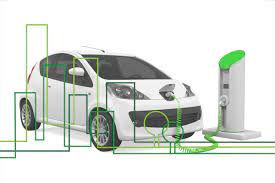Courtesy : pluginbc.ca
Electric vehicle research
People often ask about the environmental impact of building and driving electric vehicles. Let’s be abundantly clear: manufacturing anything requires physical resources and energy. That’s why you will see vehicle studies that measure lifetime emissions: the emissions produced during manufacturing, operation and recycling. A sure way to reduce environmental impacts is to reduce consumption. In transportation, that can be achieved using public transit or micro-mobility where possible. When vehicles are necessary, electric is the way to go. Electric vehicles produce fewer emissions than gas, regardless of how power is generated.
Keep in mind that an entirely coal powered grid is rare, and electric cars will produce fewer emissions than gas cars over their lifetimes even in power grids that rely on coal and gas. Yes, studies have measured the emissions: even in a coal-powered grid, it’s better to drive an electric vehicle than a gas vehicle. For example, as of 2018, 75% of drivers in the USA lived in a state where driving electric was better than a 50 mpg gas car.
In B.C., we have a very clean grid powered mostly by hydro electricity. Operating an electric car produces zero emissions from the vehicle itself and almost nothing from power production. In terms of lifetime emissions, an average fully electric car in B.C. would be better than a 450 mpg gas car. This makes B.C. an ideal place to reduce transportation emissions with electric vehicles.
Electric vehicles achieve these massive improvements because electric drivetrains are very efficient at moving vehicles around, especially compared to gas. While gasoline is very energy rich, combustion engines aren’t very efficient. A litre of gasoline has the energy equivalent of 8.9 kWh of electricity, but most of that energy is lost as heat/friction. All the heat generated by an engine, and the components that go into cooling it, have nothing to do with moving the vehicle. A gas engine is only 20% to 30% efficient in the best case.
Electric vehicles are much more efficient. The electric system is simply driving electric motors with single speed transmissions and not losing much as heat or friction. Plus they don’t idle and they recover some electricity through regenerative braking, which uses the motor like a turbine to provide resistance and generate power when you come to a stop or descend a hill.
So, EVs end up needing only about 25% of the energy that a gas car would. We can see the difference expressed in “Le/100 km” consumption ratings, which calculate electricity use in the equivalent energy from litres of gas. For example, a gas Hyundai Kona uses 7.9 L/100 km, whereas the electric version uses 2.0 Le/100 km. You can see fuel efficiency for vehicles in Canada on Natural Resources Canada’s
On the grid side of the conversation, a gas power plant is more efficient than the engine in your car. It converts heat to electricity, doesn’t get stuck in traffic, and doesn’t idle in the drive-thru. So while it may seem unlikely at first, using an electric vehicle in a non-renewable grid still produces fewer emissions than driving a gas car due to 1) the combined efficiency of the EV itself and 2) the relative efficiency of a power plant over a gas vehicle.
Powering electric cars with non-renewable electricity is not ideal, but it’s a reality in some places and is far better than using gas vehicles. Again, B.C. has a mostly hydro-electric power grid, making every EV on the road an especially big win.
It’s no revelation that battery packs require energy and materials to build, and therefore electric vehicles have associated emissions from manufacturing. But let’s make a few other things clear:
- The emissions from manufacturing are largely dependent on the cleanliness of the power grid where batteries are made. Those grids are becoming cleaner, so the upfront emissions are decreasing. In fact, Volkswagen’s new ID.3 and ID.4 electric vehicles are carbon-neutral (from manufacturing) when delivered to customers since their factory uses 100% green energy. As would be the case with any vehicle, shipping introduces extra emissions.
- Another example: Polestar is setting an ambitious goal of making “climate-neutral” vehicles, which further eliminate emissions from the supply chain and manufacturing.
- As electric grids become cleaner, so do the electric vehicles in those grids. An improvement in power production instantly becomes a benefit to all the vehicles using that power.
Research
If you want to look into the topic further, get started with the articles linked below. Should you have any questions about owning an EV or living the electric life, send them our way at
- A global comparison of the life-cycle greenhouse gas emissions of combustion engine and electric passenger cars; report by International Council on Clean Transportation
- Interactive tool shows electric vehicle emissions and costs by model compared to gas vehicles.
- Motor Trend’s own summary of EV emissions research
- Electric vehicles as part of Canada’s climate change solution
- Emissions from lithium ion battery production much lower than two years ago
- Comparing Global Warming Impacts of Electric and Gas Powered Vehicles by Electrical Region (Canada)
- UBC Lifecycle Analysis of Electric Vehicles



